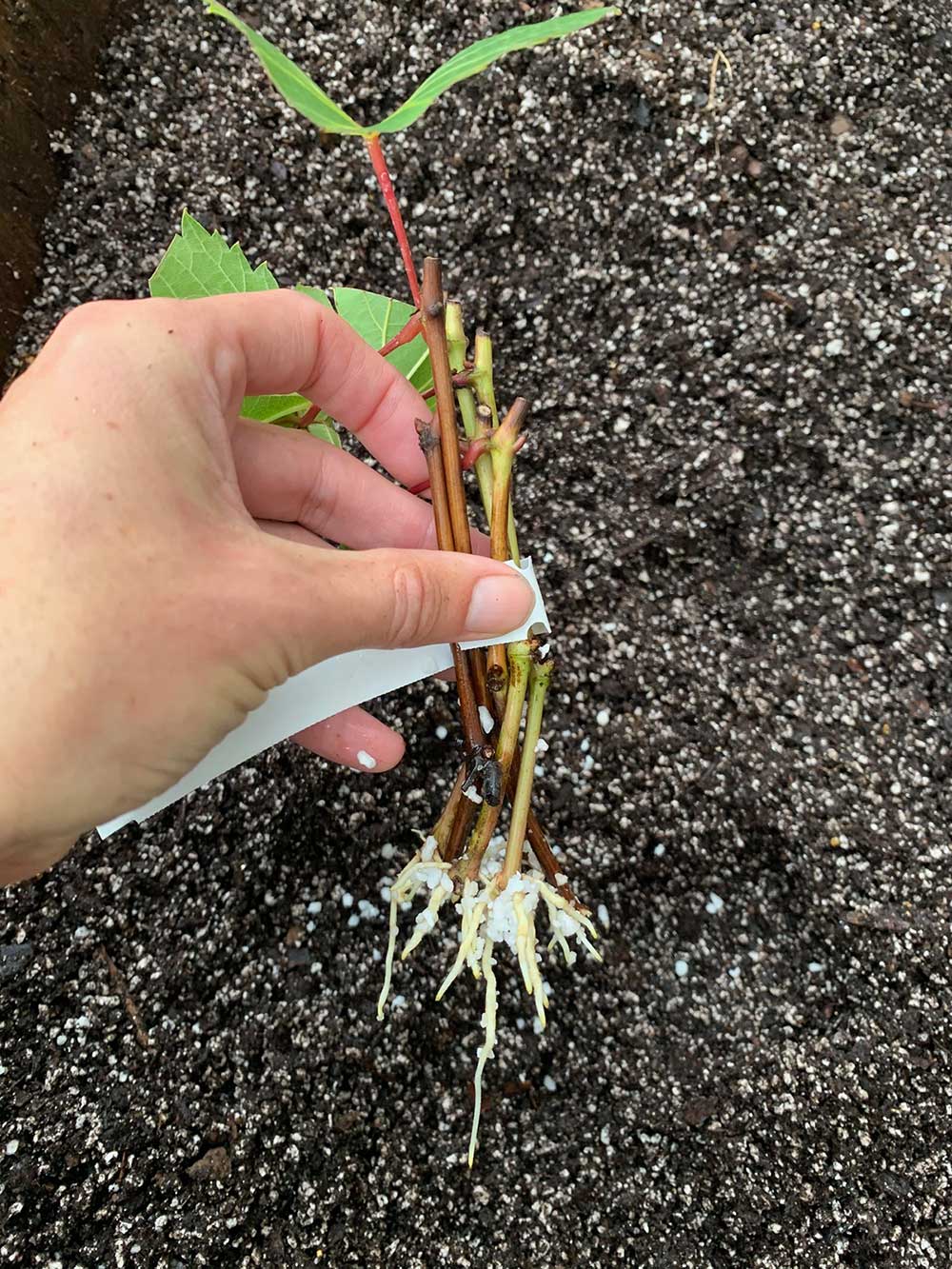Authors:
Annie Klodd, UMN Extension Educator - Fruit Production
Matt Clark, Assistant Professor and Extension Specialist - Grape Breeding and Enology
Why some growers consider propagating their own vines
A popular question this week has been "How do I propagate my own grapevines from cuttings?" Some growers consider propagating their own cold climate grapevines rather than purchasing bare-root plants from a nursery.
The idea may come about with the goal of saving money on new plants. Other growers are simply interested in learning about plant propagation by trying it out.
Because cold climate hybrid grapevines are not grafted onto rootstocks like Vinifera varieties, the process of propagating is relatively approachable. It may also seem free at first glance. However, growers considering doing their own propagation should keep in mind the potential risks and cost of labor, supplies and materials. It may not end up saving any money at all, may even cost extra, and will undoubtedly increase labor.

Propagating vines at home has hidden costs
Nursery growers have years of expertise in growing vines specifically for propagation. They go through extraordinary measures to ensure that their bare-root plants are disease-free and healthy before shipping them to customers.
It can be challenging for a new grower without nursery experience to replicate these quality control practices. This may be fine if the goal is simply to learn how to propagate or do it for pleasure, but can become daunting quickly if the goal is to expand the vineyard’s acreage.
Without excellent disease control measures, home-propagated vines may spread critical diseases such as viruses, crown gall, phomopsis, and grapevine trunk diseases to new parts of the vineyard. We recall an example in Minnesota, where self-propagated replacement St. Croix vines spread crown gall throughout a vineyard a few years ago.
In addition to disease control, nurseries also employ practices to encourage healthy, vigorous root systems. Without proper training and supplies, home-propagated vines may lack vigor and be slow to establish in the vineyard. Slow establishment can equate to lost production and revenue in the first few seasons the vines are in the ground. With that in mind, does it really save money to home-propagate vines?
Propagating vines does come with costs, even if the canes themselves are “free.” Costs include rooting hormones, specific potting media, fertilizer, pots, space, weed control, watering or irrigation, and the labor to produce them. Advanced methods like tissue culture propagation or misting systems require extensive start-up costs. The tender roots of newly rooted vines must also be protected over the winter from extreme temperatures or held in cold storage to maintain dormancy. Additionally, not all cuttings will survive and take root in the potting media. At the cost of $3-5 per vine at the nursery, how much money is really saved by going DIY?
Patented Varieties
Itasca, Frontenac gris, Marquette, and LaCrescent are patented varieties that require a license from the University of Minnesota to propagate. Only licensed nurseries can legally propagate them. Owning a plant of a patented variety does not not give the grower permission to propagate it, even as a replacement vine due to death. More information can be found on the MN Hardy website.
A portion of the royalty fees associated with purchasing these varieties goes back to the UMN Grape Breeding Program, which makes it possible for us to conduct research on grape genetics, wine making, and developing new varieties.
Benefits of working with a nursery
In addition to the excellent management practices that nurseries use to propagate high quality bare-root plants, they also provide support to their customers about how to store and plant each variety once the vines are shipped.
Some nurseries offer a warranty, especially on dormant plants.
Nurseries maintain “mother blocks” that are specifically managed for the production of nursery stock which contributes to uniformity, traceability, and disease control.
Resources for the brave (how to propagate grapevines)
Our advice is to try propagation if you are interested in learning about it, but consider all factors before relying on it as a way to expand your commercial vineyard’s acreage. Propagating our native grapevines and those varieties that are not under patent is a rewarding practice. You are certain to improve your knowledge of grapevine morphology. If, after reading this, you are still interested in propagating non-patented vines at home, visit these resources to learn how:
Propagation of Grape Vine Cuttings: A Practical Guide
Grape.extension.org - Propagation
Propagating Grapevines Using Two-Bud Cuttings - A SARE grower project